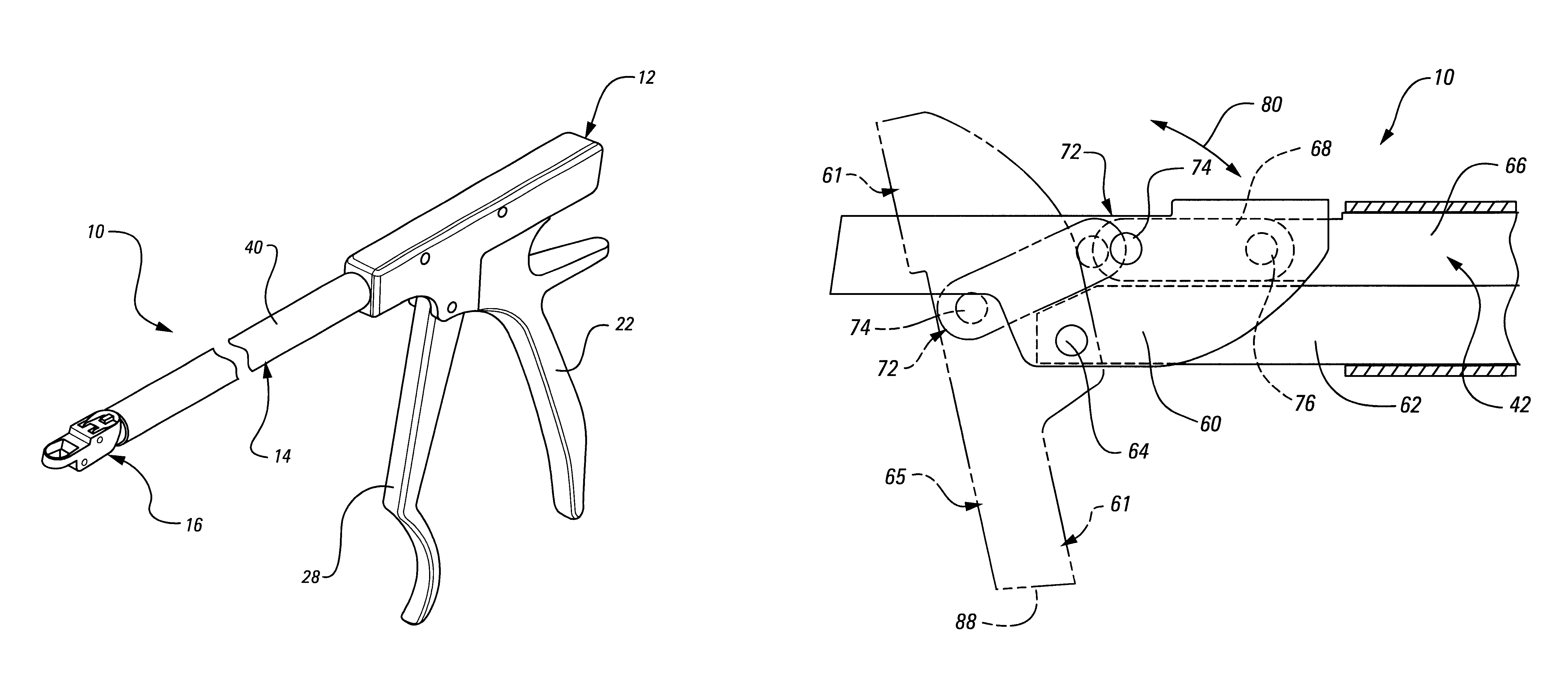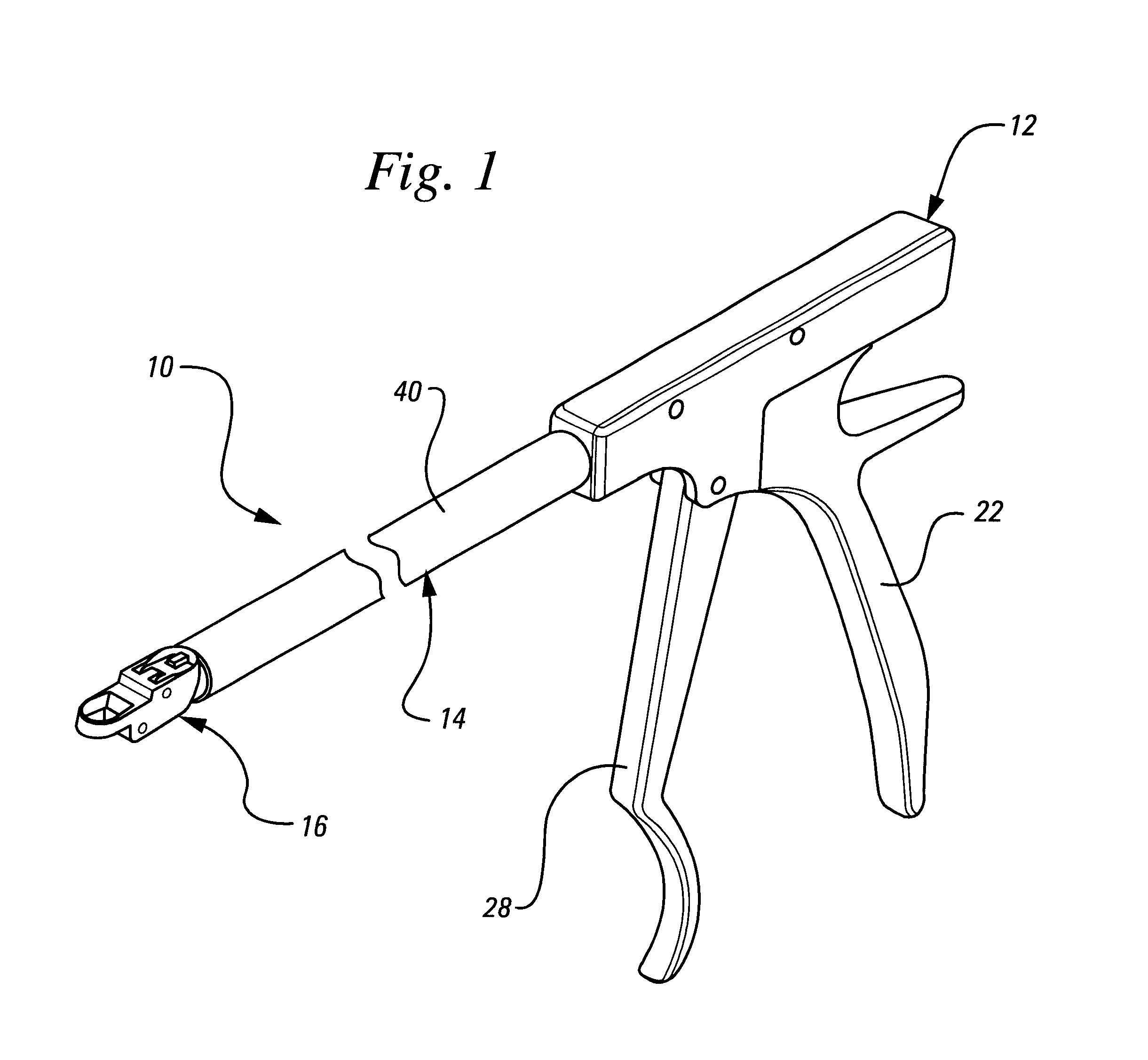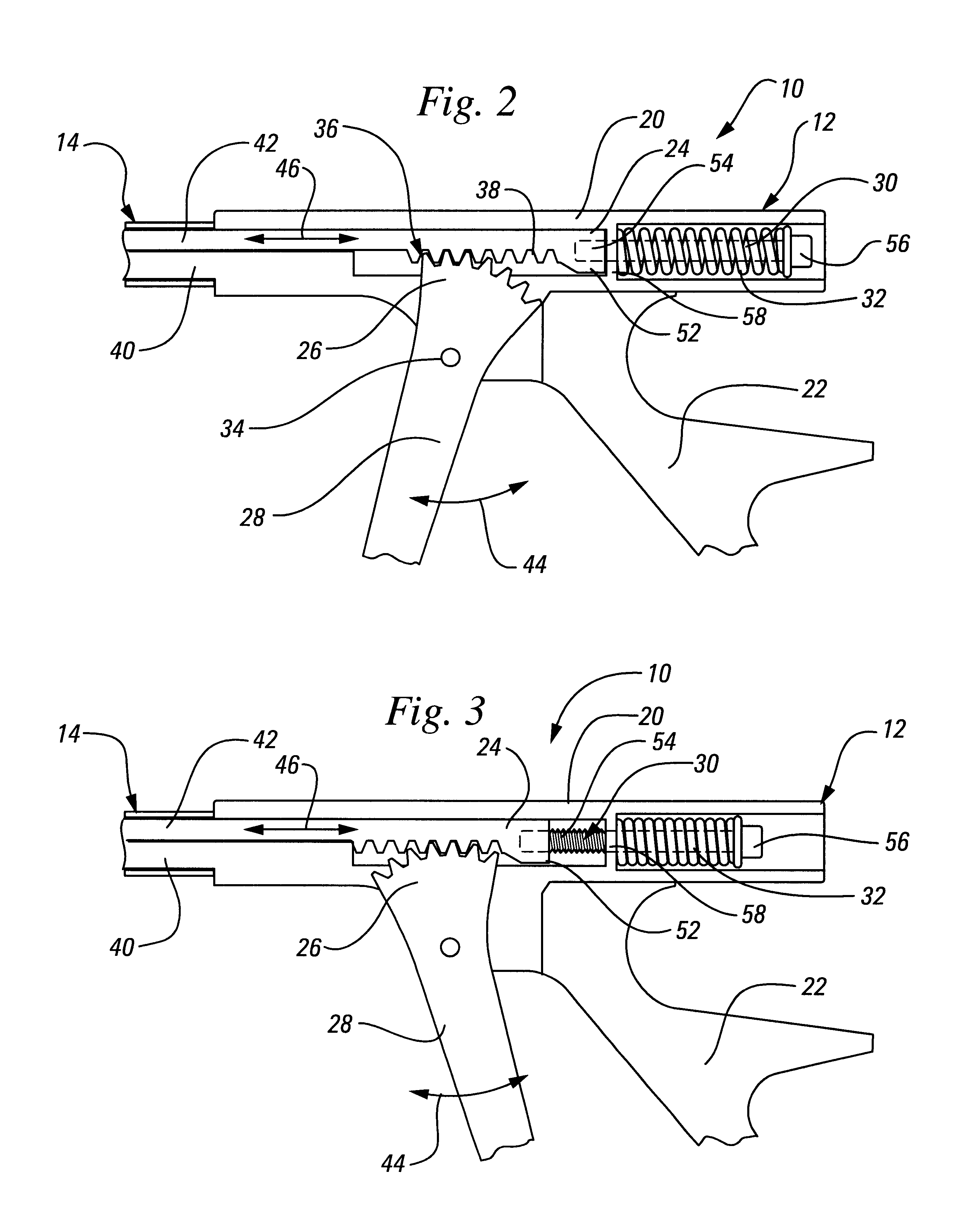Circumferential resecting reamer tool
a reamer tool and circular resecting technology, applied in the field of apparatus and method, can solve the problems of painful condition, inefficient tools, and affecting the healing effect of patients,
- Summary
- Abstract
- Description
- Claims
- Application Information
AI Technical Summary
Benefits of technology
Problems solved by technology
Method used
Image
Examples
Embodiment Construction
is hereafter described with specific reference being made to the drawings in which:
FIG. 1 is a perspective view of an embodiment of the invention;
FIG. 2 is a cut-away side view of an embodiment of the invention in the non-actuated position;
FIG. 3 is a cut-away side view of the embodiment of the invention shown in FIG. 2 in the actuated position;
FIG. 4 is a side view of the distal end of an embodiment of the invention wherein the pivoting action of the cutter beam is illustrated;
FIG. 5 is a perspective view of the linkage assembly of the distal end of the reamer tool shown in FIG. 4;
FIG. 6 is a top-down view of an embodiment of the cutter beam;
FIG. 7 is a cut-away side view of a two handed embodiment of the invention in a non-actuated position;
FIG. 8 is cut-away side view of a two handed embodiment of the invention in an actuated, cutting position;
FIG. 9 is a side view of a serrated cutting beam;
FIG. 10 is an end view of the serrated cutting beam of FIG. 9;
FIG. 11 is an enlarged side...
PUM
 Login to View More
Login to View More Abstract
Description
Claims
Application Information
 Login to View More
Login to View More - R&D
- Intellectual Property
- Life Sciences
- Materials
- Tech Scout
- Unparalleled Data Quality
- Higher Quality Content
- 60% Fewer Hallucinations
Browse by: Latest US Patents, China's latest patents, Technical Efficacy Thesaurus, Application Domain, Technology Topic, Popular Technical Reports.
© 2025 PatSnap. All rights reserved.Legal|Privacy policy|Modern Slavery Act Transparency Statement|Sitemap|About US| Contact US: help@patsnap.com



